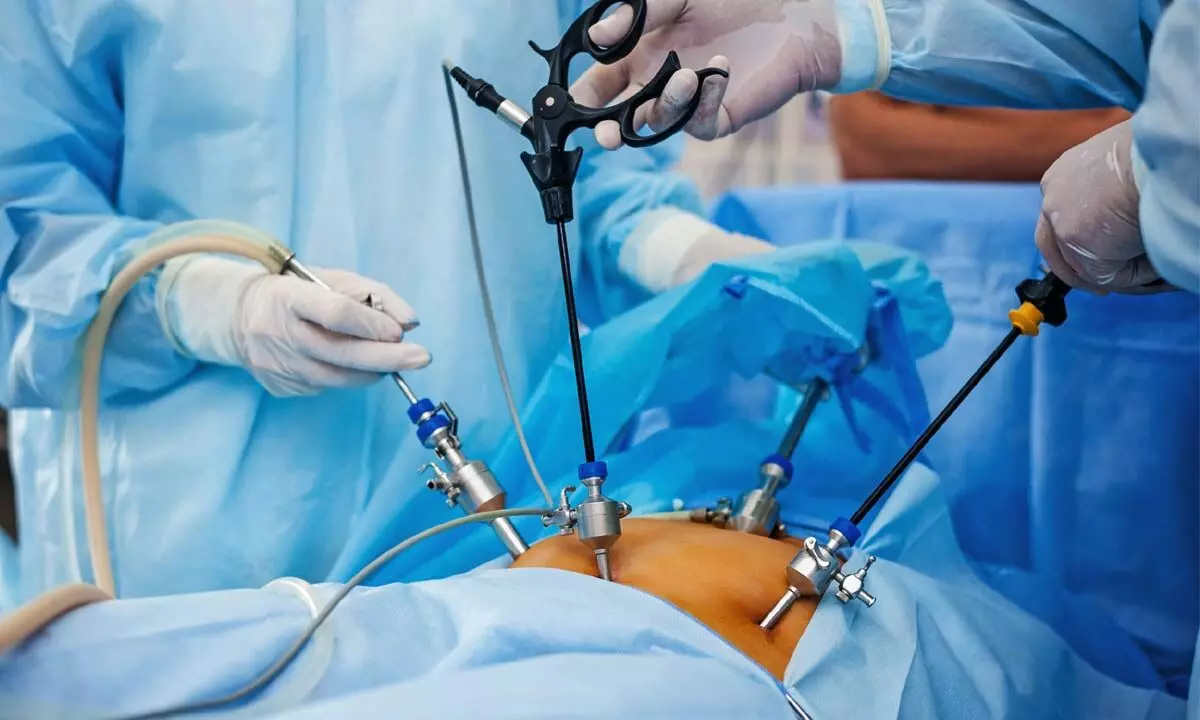What is laparoscopic Surgery?

Laparoscopic Surgery
Many people tend to be scared, when they hear, they need to undergo surgery, you can have sigh of bit relief, when the surgery is Laparoscopy, this one is a type of surgery, which uses smaller cuts than you might expect.
Many people tend to be scared, when they hear, they need to undergo surgery, you can have sigh of bit relief, when the surgery is Laparoscopy, this one is a type of surgery, which uses smaller cuts than you might expect.
The process takes it name from the laparoscope, a slender tool which has tiny video camera and light on the end. When the surgeon inserts it through a small cut and into your body, they can look at video and monitor and see what is happening inside you. Without out those tools, they would have make a much larger opening. Thanks to special instrument, your surgeon, need not reach into your body, either, that means less cutting.
Minimally invasive surgery, Laparoscopic surgery is one kind, Doctors first used it for gallbladder surgery and gynaecology operations. Then it came in play for the intestines, liver and other organs.
How it is done?
Before this system came into existence, a surgeon, who operated on their patient's belly required to make a cut which is around 6 to 12 inches long, this gave them enough room to see what they were doing and reach whatever they had to work on.
In laparoscopic surgery, the surgeon does make numerous cuts, usually each one not more than half inch long, they tend to insert a tube through each opening and camera and surgical instrument go through those. Then the surgeon does the operation.
Benefits
Working this way, has got numerous advantages when compared to the traditional surgery, as it involves less cutting.
-you have smaller scars
-you are discharged from the hospital quicker
You feel less amount of pain while the scars tend to heal much quicker
-you get back to your normal activities sooner
-you might have less internal scarring
With the help of traditional methods, you might spend a week or more in the hospital for intestinal surgery and your total recovery might take around 4 to 8 weeks. If you tend to have laparoscopic surgery, you might stay only 2 nights in the hospital and recover in about 2 or 3 weeks. And a shorter hospital stay generally costs less.
Advanced Kinds of Laparoscopic Surgery
In few operations, the surgeon can put the camera and the surgical tool through the same opening in the skin. This means less scaring, but it is much trickier for the surgeon because the instruments are so close together.
In other cases, the surgeon might decide to use a device which enables them to reach in with a hand. This is called hand assisted Laparoscopy. The cut in the skin has to be longer than a half inch, but it can be smaller when compared to traditional surgery. This has made it possible to use laparoscopic surgery for the liver and other organs.
When Robotics help
Technology can assist the medical team to be precise. In the robotic version of laparoscopic surgery, the surgeon first cuts into the skin and inserts the camera, as usual, instead of taking hold of the surgical instruments, they tend to set up a robots mechanical arms. Then they move to a computer.
A lot of surgeons think robotic surgery is especially helpful for operating on people who weigh a lot and for gynaecology and urology surgery. Most prostate removal operations use robots.
With the help of robotic surgery, the monitor offers the surgeon on a 3-D, high resolution, magnified inside the body. As they tend to watch the screen, they use hand controls to operate the robot and surgical instruments. This enables the surgeon be more exact and it can mean less impact on your body and less bleeding. You might also have less amount of discomfort after the operation.
















